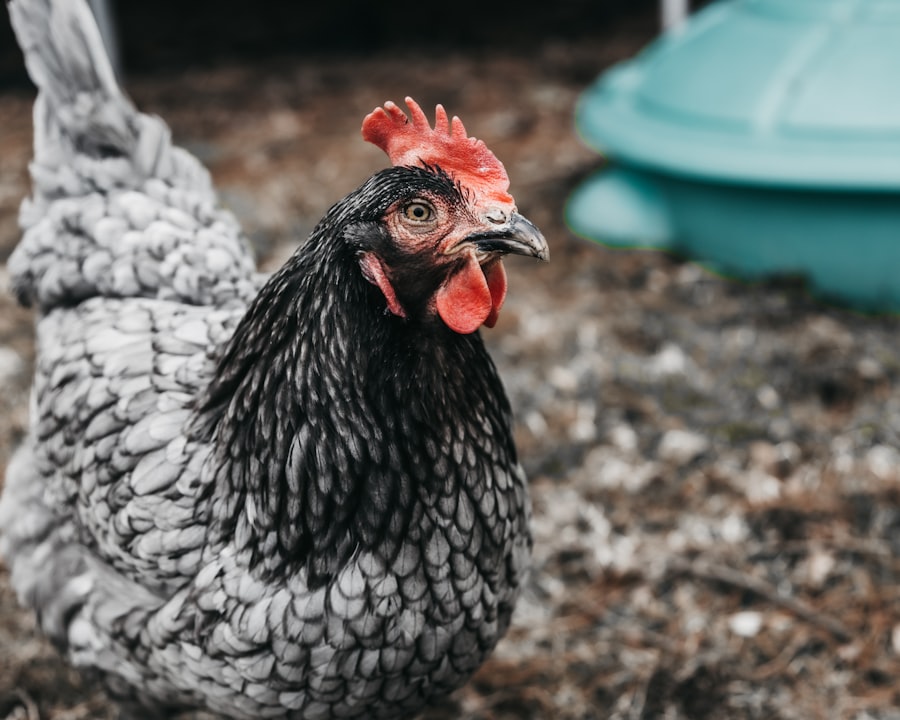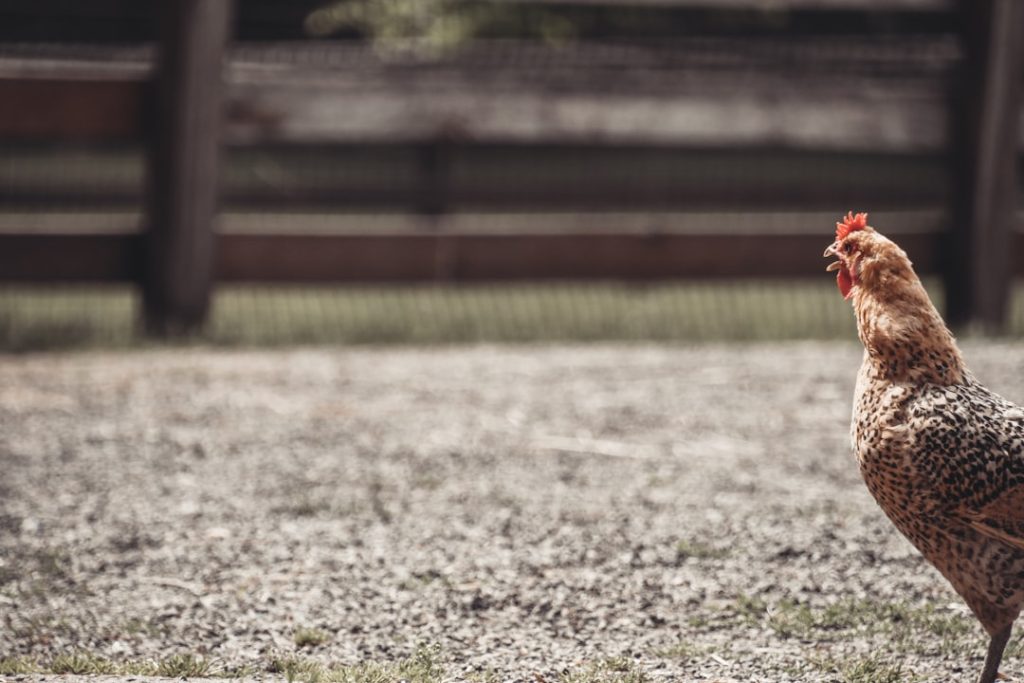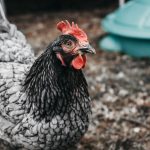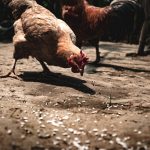Keeping chickens dry is essential for their health and well-being. Wet conditions can lead to various health issues in chickens, including respiratory problems, fungal infections, and hypothermia. Prolonged exposure to dampness can weaken their immune system, making them more susceptible to diseases.
Wet feathers can cause discomfort and stress for the birds, potentially impacting their overall productivity and egg-laying capabilities. Therefore, chicken owners must take proactive measures to ensure their chickens remain dry at all times. One of the most significant risks of keeping chickens in damp conditions is the development of respiratory problems.
Moisture exposure can lead to mold and bacteria growth in their environment, which can be harmful to their respiratory system. This can result in coughing, sneezing, and difficulty breathing for the birds. In severe cases, it can lead to chronic respiratory diseases that significantly impact the overall health and lifespan of the chickens.
Consequently, chicken owners should prioritize keeping their coop and run dry to prevent these respiratory issues from arising.
Table of Contents
- 1 Choosing the Right Cage
- 2 Providing Adequate Shelter
- 3 Using Proper Bedding
- 4 Regular Cleaning and Maintenance
- 5 Protecting Against Rain and Moisture
- 6 Monitoring for Signs of Dampness
- 7 FAQs
- 7.1 What are the best practices for keeping chickens dry while in the cage?
- 7.2 How can I prevent moisture buildup in the chicken coop?
- 7.3 What are the signs of a wet or damp chicken coop?
- 7.4 What measures can be taken to protect chickens from rain and wet weather?
- 7.5 How often should bedding be changed to keep chickens dry?
Key Takeaways
- Keeping chickens dry is crucial for their health and well-being
- Choose a cage that provides enough space and protection from the elements
- Provide adequate shelter to protect chickens from rain and moisture
- Use proper bedding such as straw or wood shavings to keep the coop dry
- Regularly clean and maintain the coop to prevent dampness and mold buildup
Choosing the Right Cage
Ventilation and Elevation
When it comes to keeping chickens dry, choosing the right cage is essential. The cage should be well-ventilated to allow for proper air circulation, which can help prevent moisture buildup inside the coop. Additionally, the cage should be raised off the ground to prevent water from seeping in during rainy weather. This can be achieved by placing the cage on a platform or using legs to elevate it off the ground.
Space and Material
The cage should be spacious enough to accommodate the number of chickens being housed, as overcrowding can lead to increased moisture levels from the birds’ droppings. Another important factor to consider when choosing a cage is the material it is made of. Wooden cages are prone to rotting when exposed to moisture, so it is essential to treat the wood with a waterproof sealant to protect it from the elements. Alternatively, metal cages are more resistant to moisture and can be a better option for keeping chickens dry.
Regular Maintenance
It is important to regularly inspect the cage for any signs of damage or wear and tear that could compromise its ability to keep the chickens dry.
Providing Adequate Shelter

In addition to a suitable cage, providing adequate shelter for chickens is essential for keeping them dry. This includes ensuring that the coop is well-built and watertight to prevent rainwater from seeping in. The roof should be sloped to allow for proper drainage, and any gaps or cracks should be sealed to prevent water from entering the coop.
It is also important to provide a covered area in the run where the chickens can seek shelter during inclement weather. Furthermore, providing natural shelter in the form of trees or shrubs in the chicken’s outdoor area can also help protect them from rain and moisture. These natural elements can provide additional coverage and protection from the elements, helping to keep the chickens dry and comfortable.
Additionally, providing adequate shelter can also help prevent mud from forming in the run, which can further contribute to damp conditions for the chickens.
Using Proper Bedding
Using proper bedding is essential for keeping chickens dry and comfortable. The bedding should be absorbent and provide a dry surface for the chickens to walk and rest on. Common bedding materials include straw, wood shavings, or shredded paper, all of which can help absorb moisture and keep the coop dry.
It is important to regularly replace the bedding to prevent moisture buildup and ensure that the chickens have a clean and dry environment. Additionally, providing a thick layer of bedding can help insulate the coop and provide warmth for the chickens during colder months. This can help prevent condensation from forming inside the coop, which can contribute to damp conditions.
Furthermore, using proper bedding can also help control odors and reduce the risk of bacterial growth in the coop, contributing to a healthier environment for the chickens.
Regular Cleaning and Maintenance
Regular cleaning and maintenance are essential for keeping chickens dry and healthy. This includes removing soiled bedding and replacing it with fresh, dry bedding on a regular basis. It is also important to regularly clean and disinfect the coop to prevent the buildup of bacteria and mold that can thrive in damp conditions.
Additionally, regularly inspecting the coop for any signs of damage or wear and tear can help prevent water from seeping in and compromising the chickens’ living environment. Furthermore, maintaining proper drainage around the coop and run can help prevent water from pooling around the area, which can contribute to damp conditions. This includes ensuring that gutters are clear of debris and that water is directed away from the coop to prevent water from seeping into the structure.
Regular maintenance of the coop and its surroundings is essential for preventing moisture buildup and ensuring that the chickens are kept dry at all times.
Protecting Against Rain and Moisture

Preventing Water Ingress
To prevent water from entering the coop, it’s essential to take proactive measures. Installing gutters and downspouts can direct rainwater away from the structure, ensuring the coop remains dry.
Providing Shelter in the Run
In addition to protecting the coop, providing adequate cover in the run area can help shield your chickens from the rain while they’re outdoors. Installing a tarp or canopy over part of the run can provide shelter from the elements.
Maintaining Proper Ventilation
Proper ventilation in the coop is vital to prevent moisture buildup from condensation. This can occur when warm air meets cold surfaces. Installing vents or windows that can be opened allows for proper air circulation, reducing the risk of moisture buildup. Additionally, using fans or dehumidifiers can help reduce humidity levels inside the coop, contributing to a drier environment for your chickens.
Monitoring for Signs of Dampness
Monitoring for signs of dampness is crucial for ensuring that chickens are kept dry at all times. This includes regularly checking for any signs of moisture buildup in the coop or run, such as wet bedding or condensation on surfaces. Additionally, inspecting the structure for any signs of leaks or damage that could compromise its ability to keep out moisture is essential for preventing damp conditions.
Furthermore, monitoring the chickens themselves for any signs of discomfort or illness related to dampness is important. This includes observing their behavior for any signs of respiratory issues or stress that could be caused by damp conditions. Additionally, regularly checking their feathers for any signs of wetness or mold growth can help identify potential issues with keeping them dry.
In conclusion, keeping chickens dry is essential for their health and well-being. By choosing the right cage, providing adequate shelter, using proper bedding, regular cleaning and maintenance, protecting against rain and moisture, and monitoring for signs of dampness, chicken owners can ensure that their birds are kept dry at all times, reducing the risk of health issues and promoting a comfortable living environment for their flock.
If you’re looking for tips on how to keep chickens dry while in the cage, you might also be interested in learning about what vegetables quails eat. Check out this article to discover the best vegetables to feed your quails for optimal health and nutrition. And for more poultry-related information, be sure to visit poultrywizard.com. Additionally, you can also find helpful advice on determining the ideal chicken coop door size by visiting this article.
FAQs
What are the best practices for keeping chickens dry while in the cage?
To keep chickens dry while in the cage, it is important to provide proper shelter and bedding. This includes using a well-ventilated coop with a waterproof roof and providing dry bedding such as straw or wood shavings.
How can I prevent moisture buildup in the chicken coop?
To prevent moisture buildup in the chicken coop, it is important to ensure proper ventilation and drainage. This can be achieved by installing windows and vents in the coop, as well as using raised platforms to keep the chickens off the damp ground.
What are the signs of a wet or damp chicken coop?
Signs of a wet or damp chicken coop include a musty odor, mold or mildew growth, and damp bedding. Additionally, chickens may show signs of discomfort such as huddling together for warmth or exhibiting respiratory issues.
What measures can be taken to protect chickens from rain and wet weather?
To protect chickens from rain and wet weather, it is important to provide adequate shelter and cover for the coop and outdoor run. This can include using tarps or awnings to create a dry area, as well as providing access to a covered area for the chickens to seek shelter.
How often should bedding be changed to keep chickens dry?
Bedding should be changed regularly to keep chickens dry, especially during wet weather. This can vary depending on the size of the coop and the number of chickens, but a general guideline is to replace the bedding every 1-2 weeks or as needed to maintain a dry environment.
Meet Walter, the feathered-friend fanatic of Florida! Nestled in the sunshine state, Walter struts through life with his feathered companions, clucking his way to happiness. With a coop that’s fancier than a five-star hotel, he’s the Don Juan of the chicken world. When he’s not teaching his hens to do the cha-cha, you’ll find him in a heated debate with his prized rooster, Sir Clucks-a-Lot. Walter’s poultry passion is no yolk; he’s the sunny-side-up guy you never knew you needed in your flock of friends!







